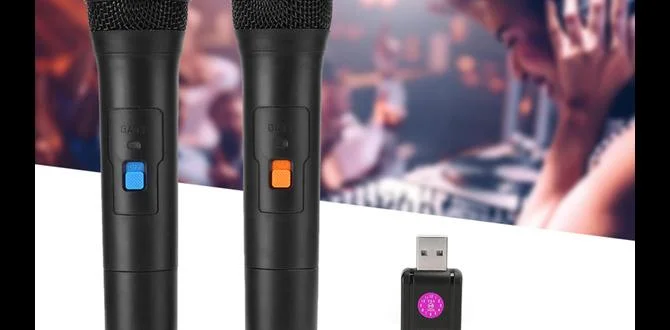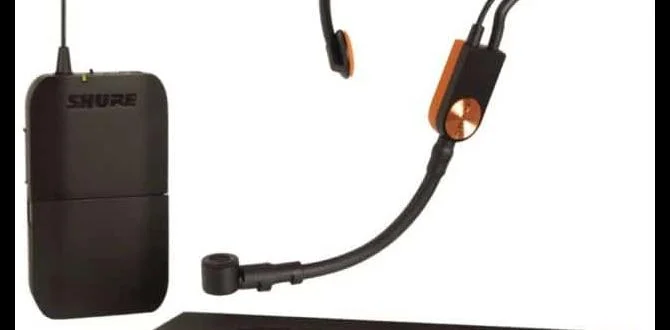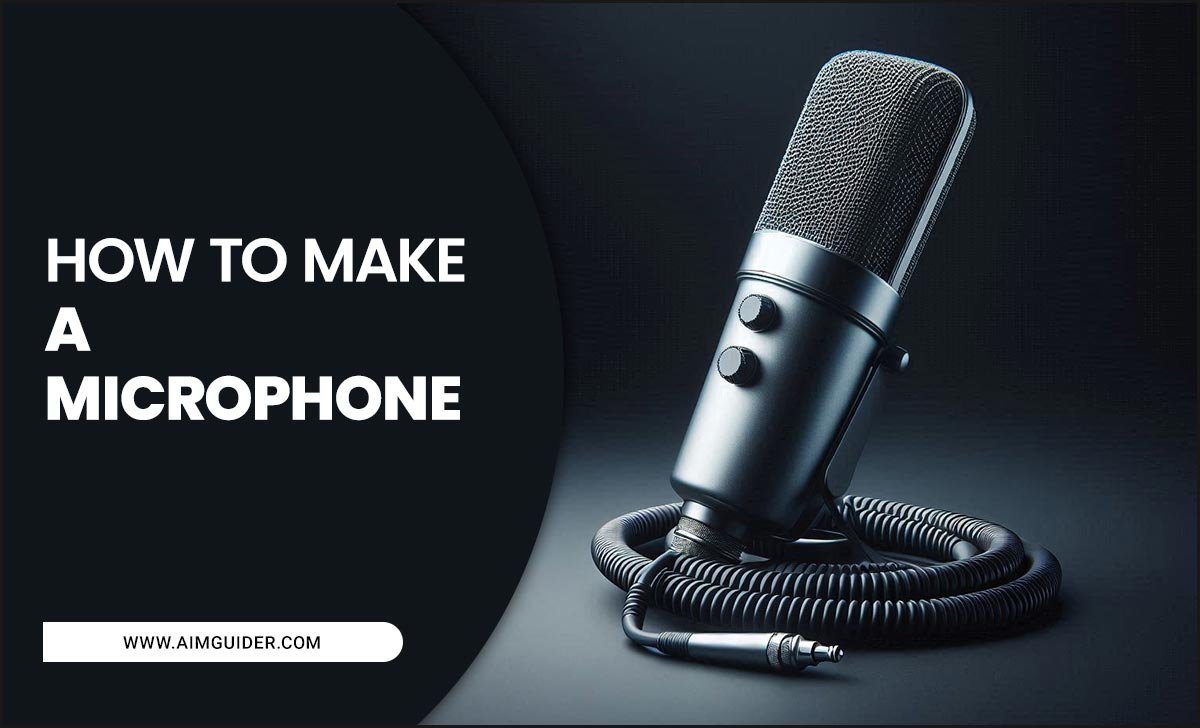Quick Summary: Ready for backyard movie nights? The best outdoor TV with Bluetooth connects easily to speakers, resisting weather for lasting entertainment. This guide helps you pick the perfect setup for seamless outdoor viewing and immersive sound.
Imagine this: A warm evening, a gentle breeze, and your favorite movie projected onto a screen in your backyard. Sounds amazing, right? But the reality for many is dealing with glare, worrying about the weather, and wrestling with complicated audio setups. Finding the best TV for outdoor use with Bluetooth can seem daunting, but it doesn’t have to be! We’re here to break it all down, making it super simple to create your perfect outdoor entertainment oasis. Get ready to upgrade your alfresco viewing experience with clear, easy steps and smart choices.
Why You Need a Special Outdoor Bluetooth TV
You might be thinking, “Can’t I just take my regular TV outside?” While you could, it’s a recipe for disappointment and potential damage. Regular TVs aren’t built to handle the unique challenges of being outdoors. Sun glare can make the screen unwatchable, temperature fluctuations can damage internal components, and rain or humidity can cause serious electrical problems. Plus, the sound from built-in TV speakers often gets lost in the open air.
However, TVs designed specifically for outdoor use are a different breed. They are built tough, featuring brighter screens to combat sunlight, sealed casings to protect against the elements, and often, built-in Bluetooth for easy, wireless audio connections. Adding Bluetooth capability is a game-changer for outdoor AV, eliminating the need for messy wires and allowing you to connect to portable Bluetooth speakers for richer sound that fills your space.
Key Features to Look For in an Outdoor Bluetooth TV
When you’re on the hunt for the best outdoor TV with Bluetooth, there are a few crucial features that will make or break your experience. Think of these as your non-negotiables for a successful outdoor setup.
- Weather Resistance: This is paramount. Look for an IP (Ingress Protection) rating. For example, an IP55 rating means it’s protected against dust ingress and low-pressure water jets. The higher the number, the better the protection. This ensures your investment is safe from rain, dust, and even insects.
- Sunlight Readability: Outdoor TVs boast much higher brightness levels (measured in nits) than indoor TVs. Aim for 700 nits or more, with 1000+ nits being ideal for areas with direct sunlight. Anti-glare coatings also play a huge role in reducing reflections.
- Operating Temperature Range: Regular TVs can’t handle extreme heat or cold. Outdoor TVs are designed to operate within a wide temperature range, so they won’t shut down on a hot summer day or get damaged during cooler evenings. Check the manufacturer’s specifications for their recommended operating range.
- Built-in Bluetooth: This is your ticket to wireless audio freedom. It allows seamless connection to Bluetooth soundbars, portable speakers, or even headphones without fuss. Ensure the Bluetooth version is relatively recent (e.g., Bluetooth 5.0 or higher) for a stable and efficient connection.
- Durability and Build Quality: Beyond weather resistance, the overall construction should feel robust. This includes things like tempered glass screens (which are more resistant to impact) and sturdy casings.
- Smart TV Features: Just like your indoor TV, outdoor models often come with smart capabilities, giving you access to streaming apps like Netflix, Hulu, and YouTube directly.
- Connectivity Options: While Bluetooth is key for audio, you’ll still need ports for your streaming sticks, gaming consoles, or other devices. Look for multiple HDMI ports and USB connections.
Understanding IP Ratings for Outdoor Electronics
The Ingress Protection (IP) rating is a crucial standard that tells you how well an electronic device is protected against solids (like dust) and liquids (like water). It’s an international standard, often found in product specs for outdoor equipment. Understanding these ratings will help you choose a TV that can withstand your specific outdoor environment.
An IP rating has two digits. The first digit indicates protection against solid objects (like dust), and the second indicates protection against liquids (like water). Here’s a quick breakdown:
| First Digit (Solids) | Meaning | Second Digit (Liquids) | Meaning |
|---|---|---|---|
| 0 | No protection | 0 | No protection |
| 1 | Protected against solid objects larger than 50mm (e.g., hand) | 1 | Protected against vertically falling water drops |
| 2 | Protected against solid objects larger than 12.5mm (e.g., finger) | 2 | Protected against water drops falling at a 15° angle |
| 3 | Protected against solid objects larger than 2.5mm (e.g., tools) | 3 | Protected against spraying water |
| 4 | Protected against solid objects larger than 1mm (e.g., wires) | 4 | Protected against water splashes |
| 5 | Dust protected (limited ingress, no harmful deposit) | 5 | Protected against water jets from any direction |
| 6 | Dust tight (no ingress of dust) | 6 | Protected against powerful water jets |
| 7 | Protected against temporary immersion in water (up to 1m for 30 mins) | ||
| 8 | Protected against continuous immersion in water (depth specified by manufacturer) |
While you’re unlikely to find an IPX8 TV, an IP55 or IP65 rating is generally considered excellent for most outdoor installations. This means your TV can handle dust and sprays or jets of water, covering most common weather concerns.
Choosing the Right Size and Type of Outdoor TV
Outdoor TVs come in various sizes, just like their indoor counterparts. The “right” size depends on your viewing distance and the space you have available. A good rule of thumb is to sit at a comfortable distance and determine how large a picture feels immersive without being overwhelming.
As a general guideline, for 1080p resolution, you can sit closer than with 4K. Here’s a simple chart:
| Screen Size | Recommended Viewing Distance (Approximate) |
|---|---|
| 32-43 inches | 3-5 feet |
| 50-55 inches | 5-7 feet |
| 65 inches | 6-8 feet |
| 75 inches and above | 7+ feet |
When it comes to the “type” of outdoor TV, you’ll typically see a few categories:
- Full-Sun Outdoor TVs: These are the brightest and most robust, designed for direct sunlight. They are usually the most expensive. We’re talking peak brightness of 1000 nits or more.
- Shaded-Area Outdoor TVs: These are meant for porches, patios, or under eaves where they won’t be in direct sunlight. They are still more weather-resistant than indoor TVs but are less bright (around 700 nits) and often more affordable. These are frequently referred to as “all-weather” TVs.
- Tempered Glass Outdoor TVs: This refers to the screen material, designed to be more durable and resistant to impact.
For most backyard setups where you might get some sun, a full-sun or at least a higher-end shaded-area model is recommended. Always check the specs for brightness (nits) and weatherproofing (IP rating).
Connecting Your Outdoor TV via Bluetooth: A Simple Walkthrough
One of the biggest perks of a modern outdoor TV is its built-in Bluetooth. This feature is designed to make your life easier, especially when it comes to audio. No more running wires across your lawn! Here’s how to get your Bluetooth audio connected:
- Turn on Your TV and Bluetooth Device: Power up your outdoor TV and the Bluetooth speaker or soundbar you want to connect.
- Access TV Bluetooth Settings: Navigate through your TV’s menu. Look for settings related to ‘Sound,’ ‘Audio,’ ‘Connections,’ or ‘Bluetooth.’ The exact wording can vary by manufacturer, but it’s usually straightforward to find. For example, on many smart TVs, you’ll go to Settings > Sound > Bluetooth Speaker List.
- Enable Bluetooth on the TV: Ensure the Bluetooth function on your TV is turned ON. It might automatically start searching, or you may need to initiate a scan.
- Put Your Bluetooth Device in Pairing Mode: This is crucial! Your Bluetooth speaker or soundbar needs to be discoverable. Check your device’s manual – there’s usually a dedicated Bluetooth button you need to press and hold until an indicator light starts blinking, signaling it’s ready to pair.
- Select Your Device on the TV: Your TV should now list available Bluetooth devices. Find the name of your speaker or soundbar in the list and select it.
- Confirm Pairing: The TV might ask you to confirm the pairing. Once connected, you should see a confirmation message on the TV screen, and your Bluetooth device should indicate it’s successfully paired (often with a steady light or a different audio cue).
- Test the Sound: Play some content on your TV! The audio should now be coming from your connected Bluetooth device. Adjust the volume on both the TV and the Bluetooth speaker for optimal sound.
Troubleshooting Tip: If your devices don’t pair, try turning both the TV and the speaker off and on again. Also, make sure there aren’t too many other Bluetooth devices nearby that could cause interference. Sometimes, “forgetting” the device in the TV’s Bluetooth settings and re-pairing also solves connection issues.
Enhancing Your Outdoor Audio Experience
While even a basic Bluetooth connection is a step up, you can significantly enhance your outdoor audio. The built-in speakers on most TVs, even outdoor ones, are often just okay. Tapping into Bluetooth opens up a world of possibilities for immersive sound:
- Portable Bluetooth Speakers: For a casual setup, a couple of good-quality portable Bluetooth speakers placed strategically can offer far better sound than the TV’s internal speakers. Look for rugged, waterproof models for ultimate peace of mind.
- Bluetooth Soundbars: A compact outdoor-rated soundbar can provide a significant boost to bass and clarity. Many are designed to be weather-resistant and can be mounted easily near your TV.
- Home Stereo System Integration: If you have a compatible Bluetooth-enabled home stereo receiver, you can connect your outdoor TV to your existing high-quality outdoor speakers for a truly cinematic experience.
- Dedicated Outdoor Speaker Systems: For more permanent installations, consider wired outdoor speaker systems, which often offer superior fidelity and reliability. However, if you’re set on wireless, many high-end audio brands offer weather-resistant Bluetooth speaker systems.
When choosing audio gear, consider the environment. Sound travels differently outdoors, so you might need more powerful speakers than you think to fill a larger space or overcome ambient noise like neighborhood chatter or traffic. Also, consider power sources for your speakers – battery life for portables or long extension cords for wired options.
Installation and Safety Considerations
Mounting and wiring an outdoor TV requires careful planning to ensure both safety and longevity. It’s not as simple as hanging a picture frame.
Mounting Your Outdoor TV
You’ll need a mount specifically designed for outdoor use. These mounts are typically made from corrosion-resistant materials like powder-coated steel or aluminum. Consider these factors:
- Location: Choose a spot that offers the best viewing angle and is protected from the harshest elements if possible (e.g., under an awning or porch roof). The National Electrical Code (NEC) provides essential guidelines for safe electrical installations, including considerations for outdoor environments. Always consult these standards or a professional electrician.
- Wall Type: Ensure the wall you’re mounting to (brick, wood, concrete) is structurally sound and can support the weight of the TV and mount. Use appropriate hardware for the wall type.
- Mount Type: You have options:
- Fixed Mount: Holds the TV flat against the wall.
- Tilting Mount: Allows you to angle the TV up or down.
- Full-Motion Mount: Offers tilt, swivel, and extension, providing the most flexibility.
- Professional Installation: For safety and peace of mind, especially with heavier TVs or complex mounting scenarios, hiring a professional installer is highly recommended.
Electrical Safety and Cable Management
This is perhaps the most critical aspect of outdoor TV installation. Water and electricity are a dangerous combination.
- Weatherproof Power Cords and Outlets: Use outdoor-rated power cords and ensure that any outdoor outlets are GFCI (Ground Fault Circuit Interrupter) protected. These outlets are designed to shut off power quickly if they detect a fault, reducing the risk of shock. Many jurisdictions require GFCI protection for outdoor outlets as per Underwriters Laboratories (UL) standards.
- Cable Concealment: Run all cables through conduit designed for outdoor use to protect them from UV rays, moisture, and physical damage. Seal any entry points into the house or outdoor structures to prevent water and pests from entering.
- Avoid Direct Exposure: Do not leave power adapters or sensitive electronics exposed to the elements. Consider weatherproof enclosures.
- Proper Grounding: Ensure all electrical equipment is properly grounded to prevent surges and electrical hazards.
Always refer to your TV and mount manufacturer’s installation manuals, and when in doubt, consult a qualified electrician. Safety first!
Alternative Outdoor Entertainment Solutions (and Why a TV is Better)
While a dedicated outdoor Bluetooth TV is ideal, it’s worth mentioning alternatives and why they fall short for a true home theater experience:
- Portable Projectors: These can be fun for temporary movie nights. However, they struggle immensely with ambient light, require a dark setting, and often have lower resolution and brightness than TVs. Plus, connecting audio wirelessly can be an extra step.
- Indoor TVs Outdoors (with caution): As mentioned, this is highly risky. Without weatherproofing and proper brightness, it’s a short-lived solution, if it works at all.
- Wired Outdoor Entertainment Systems: These involve running cables for both video and audio. While potentially high-quality, they lack the convenience and aesthetic simplicity of a wireless Bluetooth setup and can be complex to install.
The best outdoor TV with Bluetooth offers a blend of durability, bright display, and seamless wireless audio integration that these alternatives simply can’t match for everyday, reliable use.
Frequently Asked Questions (FAQ)
Here are some common questions about outdoor TVs with Bluetooth:
Q1: Can I use any Bluetooth speaker with an outdoor TV?
A1: Yes, as long as both the TV and the speaker support standard Bluetooth pairing protocols, you should be able to connect them. Ensure the speaker is relatively close to the TV for a stable connection.
Q2: How bright does an outdoor TV need to be?
A2: For direct sunlight, aim for at least 700 nits, with 1000+ nits providing the best visibility. For shaded areas, 400-700 nits can be sufficient.
Q3: Do outdoor TVs need a special power outlet?
A3: It’s highly recommended to use GFCI-protected outdoor-rated outlets and weatherproof power cords/connections to ensure electrical safety.
Q4: What’s the difference between an outdoor TV and a regular TV in a weatherproof box?
A4: Dedicated outdoor TVs are engineered from the ground up for heat dissipation, brightness, and weatherproofing. A weatherproof box might offer some protection, but it doesn’t solve issues like screen glare, internal heat buildup, or component integrity under temperature stress.
Q5: Can I leave my outdoor TV outside all year round?
A5: While designed for the outdoors, check the manufacturer’s recommendations. Some






